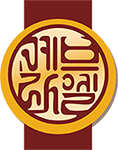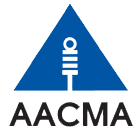Acupuncture is a traditional Chinese medicine practice dating back thousands of years. It involves the insertion of thin solid needles into specific points on the body to improve health and treat illness and is suitable for almost every health condition, either on its own or in conjunction with usual care. Acupuncture offers a unique approach to health and well-being with the ability to treat a wide range of conditions, from musculoskeletal and gastrointestinal issues to mental health, reproductive and gynaecological issues. Depression, headaches, morning sickness and sciatica are just some of the many conditions that are effectively treated by acupuncture.
What is ‘dry needling’?
The practice of ‘dry needling’ involves inserting an acupuncture needle into a trigger point and is typically used to treat the pain associated with injuries. A trigger point is a tender spot in a tight band of muscle which causes pain when pressed or squeezed. A dry needling training program often runs for just two or three days – which is just enough time for people to gain a rudimentary understanding of how to ‘needle the point that hurts’ and perhaps deliver short-term symptom relief.
Is acupuncture the same thing as ‘dry needling’?
The increasing prevalence of the term ‘dry needling’ has created some confusion. Acupuncture practice incorporates many different needling techniques and a variety of these may be required to gain the best results.
Dry needling, also known as trigger point acupuncture or, more traditionally, as ashi acupuncture, refers to just one of these techniques. A registered acupuncturist is qualified in many techniques, including trigger point acupuncture, and will adopt the best approach depending on the patient’s individual needs. The best approach does not rely on trigger points alone and sometimes trigger points are not necessary at all. If you’re only having ‘dry needling’, you are missing out on most of what a registered acupuncturist has to offer.
So do acupuncturists offer something more?
Absolutely. There is much more to acupuncture than the insertion of needles into tender points. Often the tender point will return if the underlying cause is not identified and addressed. Quality acupuncture practice involves comprehensive patient assessment, an acupuncture diagnosis and an individualised treatment plan. Appropriate needling methods and supplementary treatment can then be designed to match the patient’s circumstances. Acupuncturists combine both a traditional understanding of the body from a Chinese medicine perspective with modern innovations from current research; so in addition to methods such as needling, cupping and moxibustion, acupuncturists may use exercise therapy, massage techniques or electro- or laser- stimulation of acupoints. Some may also practise Chinese herbal medicine or other health modalities such as Western herbalism. This comprehensive approach results in a holistic diagnosis and treatment plan.
How safe is acupuncture and ‘dry needling’?
National registration of the traditional Chinese medicine (TCM) profession was introduced on 1 July 2012. This is the same type of regulation applying to other nationally registered health professions, including medical practitioners, nurses, dentists, pharmacists and psychologists. While acupuncture is considered very safe in the hands of well-trained practitioners, it has also been associated with a range of complications, some of them serious, usually from poorly trained practitioners. Australian research shows that practitioners who have undertaken short courses have more than double the rate of adverse events than fully qualified practitioners.
It’s important to be aware that the Health Practitioner National Law Act only allows practitioners registered with the Chinese Medicine Board of Australia (CMBA) (www.chinesemedicineboard.gov.au) to use the title ‘registered acupuncturist’. It does not stop anyone offering ‘dry needling’ services, whether they are registered or not.
Is my practitioner qualified in acupuncture?
In order to gain acupuncture registration with the CMBA, a practitioner must provide evidence of their competency to provide the full range of acupuncture intervention methods to the public. CMBA-approved bachelor and higher degree programs teach both traditional Chinese and modern biomedical approaches to health and illness and require substantial supervised clinical practice. If you’re unsure whether your practitioner is a registered acupuncturist, look for them on the Australian Health Practitioner Regulation Agency (AHPRA) register of practitioners at www.ahpra.gov.au/Registration/Registers-of-Practitioners.aspx.
How do I find a qualified, registered acupuncturist?
Consult a registered acupuncturist who is also accredited with the Australian Acupuncture and Chinese Medicine Association Ltd (AACMA). To find a registered acupuncturist in your area, call AACMA on 1300 725 334 or use the free online practitioner search facility.
References and further readings
- Bensoussan A, Myers S. TCM Education in Australia. In: Towards a safer choice: the practice of traditional Chinese medicine in Australia. Campbelltown, NSW: Faculty of Health, University of Western Sydney Macarthur; 1996.
- Janz S, Adams, J. Acupuncture by Another Name: Dry Needling in Australia. Australian Journal of Acupuncture and Chinese Medicine 2011;6(2):3-11. www.ajacm.com.au/Journal_AJACM/Articles_and_Abstracts/AJACM_2011_Volume_6_Issue_2.aspx
- Morris W. Dry Needling is Acupuncture: But What of Education? What of Public Safety? Eastern Currents. In: Acupuncture Today. 2013. Available from www.acupuncturetoday.com/mpacms/at/column.php?c_id=147
- Marchment R. Acupuncture, Dry Needling and Medical Acupuncture: What is the Difference? 2013. Available from: www.robinmarchment.com.au/the-blog/



